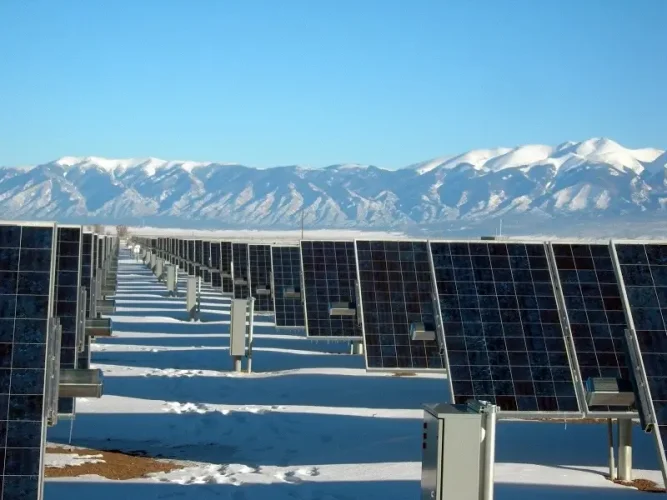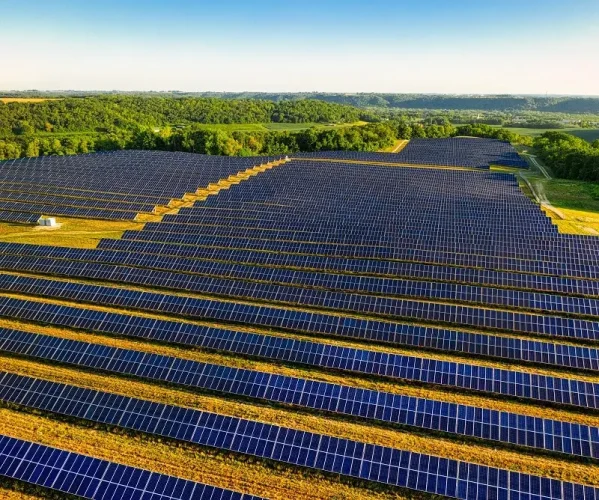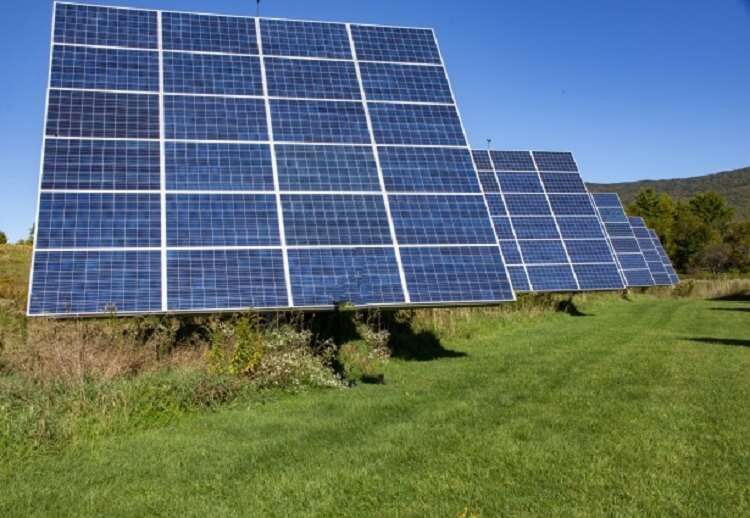Here we take a look at the common disadvantages of solar energy!
Solar energy is one of the most promising sources of renewable energy, and it’s growing at a rapid pace. It’s also becoming more affordable. With the right approach, solar energy can be a great option for powering your home or business.
But before you go out and install a solar power system, there are a few things you need to know. In this post, we’ll discuss some of the most common disadvantages of solar energy.
| Advantages | Disadvantages |
| Renewable energy source | Installation is expensive |
| Reduces bills | Weather dependent |
| Has range of applications | Solar batteries are expensive |
| Low maintenance cost | Needs space |
| Will develop further | Environmental impact |
| Sell power back to the grid | Not portable |
| Increases property value | Not suitable for all roofs |
| Energy independence |
Table of Contents
Advantages of solar energy
First, for balance and context. let’s look at some of the great things about solar energy.
Renewable Energy Source
The main and most obvious advantage of solar energy is that it is a renewable energy source. This means that it is almost unlimited. Renewable energy sources emit fewer greenhouse gases than other power sources.[1] This is as well as producing more energy than they consume during production.
The amount of energy that the Sun produces is staggering. Each second, it produces 3.8 x 10^26 joules of energy.[2] This is enough energy to power human civilization for half a million years.[3]
Of course, there is no way to harness all that energy, though nuclear fusion reactors are a tantalizing proposition. But even the energy from the Sun that does actually reach Earth is immense. In fact, every hour 430 quintillion joules hit the Earth. That is more power than humanity consumes in a whole year.[4]
Another major advantage of solar energy is that it is available everywhere. Each part of the world receives sunlight. So solar panels are useful everywhere.
Contrary to popular belief, heat is not necessary for the production of solar energy. In fact, it can be a hindrance. This is because the efficiency of solar panels decreases as temperatures rise.
Electronics produce power better at cold temperatures than they do at hot. Solar panels are no different. They start to decrease in efficiency at 25C/77F. This effect can be measured by the panel’s temperature coefficient.
So even in the planet’s most frigid and freezing climates, solar is a viable source of electrical energy.

Reduces Electricity Bills
Aside from the environmental concerns, there are other reasons for considering solar installation. One is the sheer cost of energy nowadays.
Because you are generating your own electricity you won’t be needing to take so much from the grid. This will reduce your energy bills. And after the installation has paid for itself your only expenditure is maintenance.
Now is a good time to consider whether you should take steps to start reducing your energy bills.
The average retail price of electricity increased from 6.8 cents per KiloWatt in 1990 to 11.18 cents in 2021. A rise of around 64%.[5]
Diverse Applications
Solar is a very flexible source of energy, with a range of diverse applications.
These include
- Producing electricity in places that are off-grid
- Water distillation in regions without clean water
- Powers satellites in space
- Domestic and commercial use for heating water
- Powers water pumps
- Can power air conditioning and ventilation
- Solar Lighting
Low maintenance costs
Solar is one of the lowest costing electrical systems to maintain. This is due to the absence of moving parts.
Solar maintenance costs are generally between $450 and $780 per year. This includes the cost of inspecting the panels and also cleaning them.
The service will involve a visual inspection. This is when any fault or drop in electrical generation can be detected and resolved.
This means that the average annual maintenance cost to the homeowner is around $630.
But, the cost can be as little as $150 for the yearly inspection without cleaning. [6]
The cleaner your panels the greater their efficiency in generating electricity. Generally, an annual service is enough, but some swear by having them washed every 6 months.
The necessary frequency of cleaning depends on a few factors. These include the weather – too little rainfall – as well as the angle of the panels themselves. If the installation angle of your panels is less than 5 degrees, rainfall alone may not wash away any dirt buildup [7]
Of course, some people insist on cleaning their panels themselves. This is something we recommend you leave to the professionals. Roofs and water can be a dangerous combination if you don’t know what you are doing.
Technological development
As with all tech, we expect solar panels to become more advanced. They will be cheaper and at the same time capable of harvesting an ever larger proportion of the sun’s energy.
Nowadays, the latest generation monocrystalline solar panels achieve between 15% to 22% efficiency. This is better than the 13-16% efficiency of the previous polycrystalline panels.[8]
And so it continues as technology marches into the future. Testing of new multi-junction cells achieves almost 50% efficiency in lab conditions. This reduces to 40% in situ under the sun.[9]
These are currently prohibitively expensive, but tech gets cheaper on mass production. So the future panels will harvest around double the energy using the same space.
Sell power back to the grid
One of the main benefits of solar energy on your property is that you can make money selling your excess energy.
Solar renewable energy credits (SRECs) are a certificate representing the amount of solar that you generate. A kind of voucher in exchange for your production of renewable energy. For every 1,000 kWh (or 1 MWh) of electricity generated by a solar system, you receive one SREC.
That being said, they are only available in certain states. And their value can vary between states.[10]
Increase the Value of Your Home
Solar panels can also be an excellent investment to increase the value of your home. So, any buyer will have access to cheaper energy without enduring installation. And that is valuable in itself.
Research shows that the addition of solar panels can increase the value of your property. This can be between $4,000 to $6,000 for each Kilowatt Hour of energy produced. This means that a 5 Kilowatt system could add between $20k and $30k to the value of your house.[11]
Energy Independence
On a macro level, solar energy is an excellent way for nation-states to rely less on global markets. Many of the world’s oil and gas supplies are in the hands of dubious regimes. This can force governments into undesirable predicaments and dodgy deals.
A country that produces its own energy lessens reliance on outside influences. It can also reduce its energy prices.
On a micro level, energy independence can be important for the average consumer. In the case of natural disasters, a bad one can result in an extended outage of the electricity supply. In this case, the ability to generate your own supply might be invaluable.
Disadvantages of solar energy
So those are the advantages. But as with all things that have advantages, there must be also some disadvantages too, right? You bet. Here are some of them.
The Cost
There’s no getting away from it, a solar installation isn’t cheap. The sheer cost of the initial installation of solar energy can be a daunting prospect. While a solar supply will reduce your energy costs, the wait for that break-even point can feel like a long one.
Without getting too granular, the 2022 average cost of an installation ranges from $17,538 to $23,458. This varies depending on the spec and your location. And this is after accounting for the federal solar tax credit. [12]
It is a big chunk of money for anyone to find!
The time for savings to offset the installation cost is variable. This is known as the “Solar Payback Period”. There are many factors to consider, including your energy usage and your location. Another thing to consider is any cash incentives to go solar, for which you may be eligible.
As a general rule, the Solar Payback period in the US ranges from 9 to 12 years.[13]
Weather Dependency
Another factor to consider is the dependency of solar panels on the weather. Panels placed in hot sun lose efficiency above 25C. And clouds are the enemy of solar panels.
While clouds reduce energy, the reduction is less dramatic than you might expect. While the cloud blocks direct rays, there is still some sunlight reaching the panel.
So even on the gloomiest, greyest, most overcast days the panel will collect energy. But it won’t be as much as when the panel is in direct sunlight.
Another thing to think about is the snow. The frigid climes of winter will not affect the collection of energy. On a cold sunny day, a panel will be more efficient than on a hot sunny day. But a thick coating of snow on top of a solar panel will block out the light and kill energy collection completely.
And remember, there are fewer hours of daylight in winter, while you most likely use more power to keep warm. This results in an energy deficit that you may need to make up from the grid. Whereas during summer you will likely have a surplus that you can sell to the grid in some cases.
Solar Energy Storage Is Expensive
If you have solar panels powering your gadgets, you will only be able to use what you are producing at that moment. The solution is to make use of battery storage to keep your surplus energy to use when you need it.
But this does not come cheap.
Home solar batteries are moving from lead acid installation to lithium-ion (Li-ion). These are preferable for their improved efficiency and lifespan. But they are also more expensive.
Solar batteries can vary in price from $7,000 to more than $30,000. And from $400/kWh up to $750/kWh.[14]
Uses a lot of Space

Lack of space is not so much of a problem for residential installations. But with commercial solar limited roof space can be an issue. Sometimes roof space is insufficient to meet the energy requirements of a business.
Most domestic installations need only the energy provided by their own roof space. If not, ground-mounted panels in the yard are a possible option.
Space is also an issue when it comes to solar farms. These take up a lot of land which might otherwise be used for food production or grazing. But this is less of an issue now that farmers are realizing that they can use the land for multiple purposes. Solar farms are now doubling up as eco-meadows for pollinators or grazing land for pasture animals. [15]
Of course, the one place that guarantees enough space for a solar farm is er … space. The UK is undertaking preliminary feasibility studies into the possibility of a solar farm in space. This would solve the space conundrum and ‘beam’ solar power back to Earth.[16]
Environmental Impact of Solar Panels
Most consider solar to be an environmentally friendly energy source and for the most part, it is. During its life, it produces no emissions and is not hazardous to people or the environment. Meaning that the longer its life, the less damage it causes compared to energy sources that do. Like oil or gas.
But it may not be the green panacea that many people believe.
This is because of the issues that arise during the course of manufacture and disposal. The production of solar panels is water intensive. So it can cause a drain on water resources in arid environments. It also involves the use of caustic chemicals. These include hydrofluoric acid and sodium hydroxide.
The production is also energy intensive. So, often produces use fossil fuels to generate the necessary energy. And there are other problems associated with solar panel production. These include toxic waste byproducts, unsustainable mining practices, and loss of habitat.[17]
But even more concerning is the question of what happens to expired and broken panels.
According to the International Renewable Energy Agency, there were around 250,000 metric tonnes of solar panel trash worldwide at the end of 2016. And estimates suggest that number may rise to 78 million metric tonnes by the year 2050.[18]
As solar panels age, they become less productive. They are usually replaced when their productivity declines, usually after 20-30 years. Often, because they are expensive to recycle, the panels end up in landfill. Or they go to third-world countries which use them despite their reduced efficiency.
Often, these panels go to landfill in Africa. impoverished locals then scavenge them at great risk. This exposes them to toxins and heavy metals as they seek recyclable materials to sell.
And toxins from broken panels find their way into the local groundwater. This is a fresh hazard.

But IF we recycle solar panels production becomes more expensive. The solution may be to add a recycling charge to the panels, payable by the manufacturers. This is possible. But like all these things industry-wide consensus, enforcement and regulation is needed. This includes those fabricated at low cost in third countries such as China.
You can’t take solar with you if you move
Simple one, this. If you go to all of the expenditure and upheaval of having solar installed, it is a complete pain to move to a new solar-free house. Now, financially it is not such a problem. This is because the expenditure is mitigated by the higher price you will receive for your old property.
But do you really want to go through all of the hassle and disturbance of a major installation again? Probably not, but it’s up to you.
Not Suitable for Every Type of Roof

Installers attach panels to the roof using racking. But this is a mounting system that is not suitable for every roof type.
In older, historical buildings, the style and material of the original roof can be a problem. So, cedar tiles, slate, and thatched roofs are all non-starters.
Other obstacles include old building features that did not consider solar panels. So, these might include skylights, chimneys, or roof terraces.
One workaround is to use ground-mounted panels. Though this is only possible if you have a suitable yard.
Conclusion – Disadvantages of Solar Energy
So there you have it. Solar energy has great potential but is not without its problems. The Sun is an unlimited source of power that the ingenuity of humans can harness. They can use this to stop the degradation of our planet by fossil fuels.
But to allow renewables to thrive we need to iron out the creases and avoid shortcuts. This will allow renewables to reach their potential.
Here’s some more thought-provoking information.
Like Common Disadvantages of Solar Energy? Check out our Related Articles!

